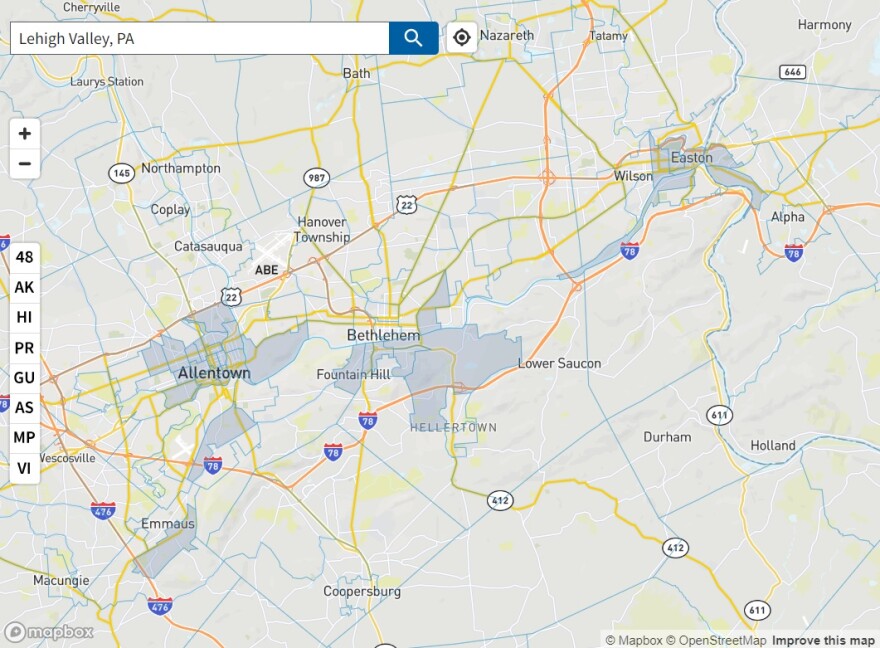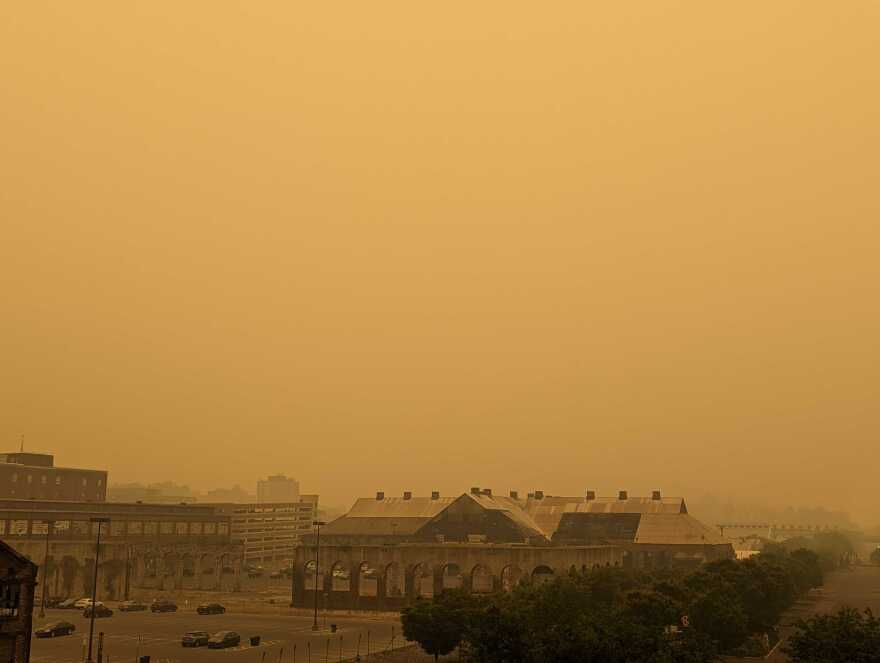BETHLEHEM, Pa. — Residents probably have heard of the greenhouse effect, but there’s a better analogy to explain climate change, Lindsay Byron said Thursday.
“Think of carbon dioxide and other greenhouse gasses as a heat-trapping blanket,” said Byron, environmental group manager for the state Department of Environmental Protection.
“As greenhouse gasses build up, they act like a blanket, trapping heat that would otherwise escape into space.
“This blanket effect is warming the planet's atmosphere, disrupting the balance that keeps the climate stable.”
State environmental officials on Thursday held the last of five public engagement sessions, four in-person and one virtual, as it works to create a Priority Climate Action Plan, or PCAP, that aims to reduce greenhouse gas emissions statewide and mitigate further effects of climate change.
With $3 million in federal grants already captured by the commonwealth, and an additional $4.6 billion up for grabs in spring, officials stressed the need for residents to submit their ideas soon in order for projects to be funded.
“We don't want to leave anyone out if there's a community that intends to apply for implementation grants for greenhouse gas reduction measures,” Byron said. “So we need to have those measures in the priority Climate Action Plan.
“We are targeting outreach toward communities and residents living near industrial operations, local governments and the industrial sector.”
About 80 people, including residents and community activists, as well as environmental and sustainability officials and organizations from across the state, participated.
‘Practical, innovative path’
The state, as well as three of the commonwealth’s largest metropolitan areas, this year got an infusion of federal funding to fight climate change.
And the Lehigh Valley was among them.
DEP in April announced the Lehigh Valley Planning Commission had been awarded $1 million by opting into the Climate Pollution Reduction Grant program, part of the federal Inflation Reduction Act.
“We have a monumental opportunity to protect and improve our land, water and air,” LVPC Executive Director Becky Bradley said in a news release announcing the funding.
“We must ensure that the quality and availability of these resources is available now and into the future. Addressing our climate crisis is going to require the kind of planning and response that can only be accomplished through a multi-governmental partnership.
“It’s a practical, innovative path to the best possible outcomes.”
In addition to the LVPC, Delaware Valley Regional Planning Commission and Southwestern Pennsylvania Commission got funding through the program.
At the same time, the state received $3 million for climate planning.
Plans for action
Over the next two years, LVPC must create a PCAP focused on industrial decarbonization, as well as a Comprehensive Climate Action Plan.
Parallel to that effort, the state also must create a PCAP. The priority plan is due March 1 for both agencies.
By participating in the Climate Pollution Reduction Grant program, states also are eligible to apply for a $4.6 billion pool of competitive implementation grants, also established by the Inflation Reduction Act and administered by the Environmental Protection Agency.
“I’ll stress again — only measures included in the Priority Climate Action Plan will be eligible for phase two implementation grants. So, it's really important that we consider community priorities early.”Lindsay Byron, environmental group manager for the state Department of Environmental Protection
“I’ll stress again — only measures included in the Priority Climate Action Plan will be eligible for phase two implementation grants,” Byron said during the public engagement session.
“So it's really important that we consider community priorities early.”
At least 40% of the benefits from grants “must occur in low-income and disadvantaged communities as defined in the White House's Climate and Economic Justice Screening Tool.”

The Valley’s three major cities — Allentown, Easton and Bethlehem — are all considered “disadvantaged,” according to the screening tool, described as “overburdened and underserved.”
Applications for implementation grants are due April 1, Byron said. They expect federal officials to notify grantees in July, and award funds in October.
Air pollution and flooding
After an introduction and explanation on how the grant process works, participants were organized into virtual break-out rooms, each with about two dozen participants with two DEP staff members to facilitate a discussion.
Officials first asked residents how climate change affects them, and several noted the health impacts of climate change, as well as extreme weather events threatening infrastructure.
“There are two major concerns. Air pollution is causing a high rate of asthma in our community, in children especially, in Reading and along the major highways. The second is flooding caused by heavy, stalled rainstorms that destroyed Antietam Middle High School in Lower Alsace Township.”Joseph Murray
“There are two major concerns,” Joseph Murray said. “Air pollution is causing a high rate of asthma in our community, in children especially, in Reading and along the major highways.
“The second is flooding caused by heavy, stalled rainstorms that destroyed Antietam Middle High School in Lower Alsace Township.”
A July storm, which flooded parts of Berks County, also caused more than $7.5 million worth of damage in Northampton County.
A month before, Canadian wildfire smoke inundated the Valley, choking its residents. This year, Allentown was designated the asthma capital of the United States.
Ideas flow forward
Cynthia Paukovitch of Nazareth noted the proliferation of warehouses in the Valley, causing an influx of diesel trucking that can exacerbate emissions as well as health conditions.
"There just doesn't seem to be enough regulation or ordinances,” Paukovitch said.
“Maybe we haven't kept up with the influx of the warehouse impact, but there doesn't seem to be enough protection to say health-wise, this is not healthy for us to be this close and this inundated with diesel trucking.”
“The key thing thinking about this, the CPRG, is that the goal is to reduce greenhouse gas emissions. So any kind of plan is fair game if it helps to reduce greenhouse gas emissions.”Colleen Unroe, a William And Hannah Penn fellow with the DEP who focuses on helping connect clean energy resources to environmental justice communities.
As the meeting progressed, ideas began to flow forward — including municipalities switching from gas to electric lawnmowers.
“That's actually not an example that we've heard thus far,” said Colleen Unroe, a William And Hannah Penn fellow with the DEP who focuses on helping connect clean energy resources to environmental justice communities.
“So if a community wanted to pursue that, that would be great.”
Other ideas included creating more bike trails, improving public transit and increasing education and engagement with residents to make everyday decisions that reduce emissions.
“The key thing thinking about this, the CPRG, is that the goal is to reduce greenhouse gas emissions,” Unroe said. “So any kind of plan is fair game if it helps to reduce greenhouse gas emissions.”


